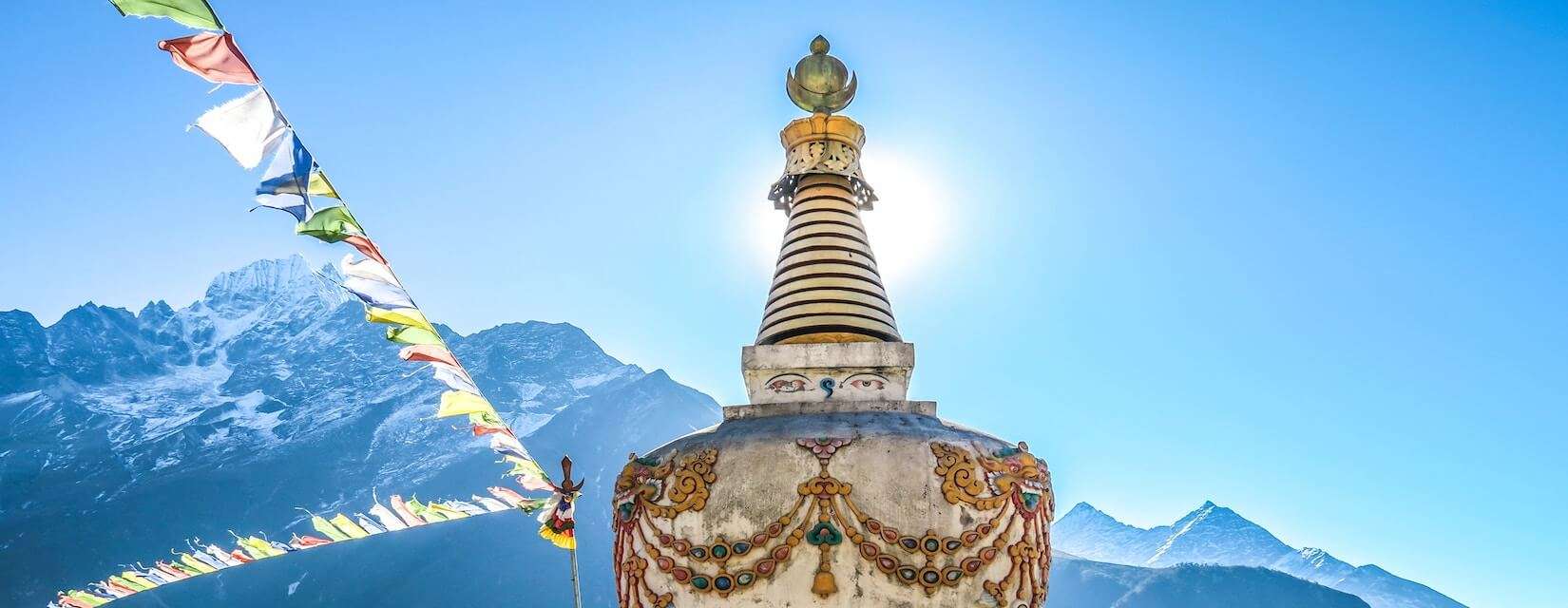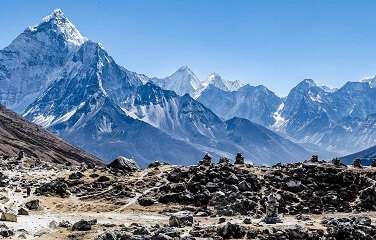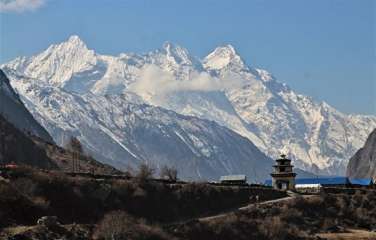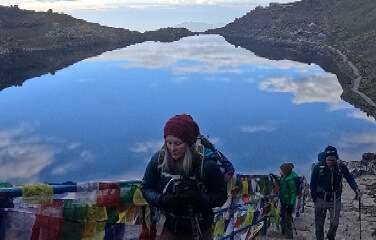Benefits of autumn/fall trekking in the Himalayas of Nepal

In Nepal's middle and upper hills, certain flowers are still in bloom even though it is October. On the other hand, late afternoons can see the formation of clouds, the beginning of rain at lower elevations, and the beginning of snow at higher elevations. This might be beneficial in removing the clouds so that the following day's mountain vistas will be fantastic.
During the fall and winter, a sizable number of trekkers will be visible on the trail and in the lodgings.
- While daylight trekking, you'll feel warm to hot.
- Numerous other hikers will be encountered both on the trail and in the lodges.
- For weather forecasts and temperature information, you can use the Internet (provided it is not too slow).
- There can be a long line of people waiting for hot showers.
- Villages with maturing millet and rice can be seen.
September
The dry season in Nepal starts in September, usually after the monsoon rains have ceased. Nepal's natural beauty is at its best in September. September is a joyous month with many celebrations in Nepal as well. Although September is regarded as a shoulder season for trekking in Nepal, the trails are still less crowded than in the peak months of October and November. For hikers who like to avoid crowds, that provides a more relaxing and peaceful experience. Since it has stable weather, a beautiful environment, cultural activities, and a less crowded trekking experience, September is a great month for trekking in Nepal. However, it is essential to thoughtfully plan and get ready for the hike, taking into account the altitude, the weather, and any necessary permits and rules.
October

The dry season in Nepal starts in September, usually after the monsoon rains have ceased. Nepal's natural beauty is at its best in September. September is a joyous month with many celebrations in Nepal as well. Although September is regarded as a shoulder season for trekking in Nepal, the trails are still less crowded than in the peak months of October and November. For hikers who like to avoid crowds, that provides a more relaxing and peaceful experience. Since it has stable weather, a beautiful environment, cultural activities, and a less crowded trekking experience, September is a great month for trekking in Nepal. However, it is essential to thoughtfully plan and get ready for the hike, taking into account the altitude, the weather, and any necessary permits and rules.
November
Even though November is not the busiest month for trekking in Nepal, it is still a great month with many benefits, like breathtaking mountain views, pleasant weather, and less crowded trails. One of the added benefits of hiking in November is that it provides a rare opportunity to learn about the customs and culture of the region. The end of harvest season allows hikers to explore desolate farming fields in Nepal's highlands. At the high-altitude pass, hikers must be aware of the weather and any potential hazards. If the weather turns bad, hikers might have to wait a day or two for it to pass. Additionally, as December draws near, temperatures might plummet, particularly in areas with high elevations like Thorung La Pass. For a secure and enjoyable hike, hikers should be properly prepared.
Favorable conditions for trekking

Thankfully, Nepal does not experience severe weather. Neither tornadoes nor cyclones have ever struck Nepal. Only the Himalayan highlands experience snowfall; other lowlands and mountainous regions are unaffected. Landslides and floods during the monsoon season are the only issues.
The problem with summer in Nepal is not the tremendous heat, but rather the deluge of monsoon rain. You might think that summer would be a perfect time to go trekking. Only clouds may produce rain, which obscures the scenery and makes the pathways slick and soggy.
Similarly to this, winter journeys become difficult because of the plentiful snowfall in the higher elevations, particularly the high-elevation passes. That only leaves the spring and fall as excellent trekking seasons. But many hikers are drawn to the Himalayan mountains by the festivities and chill of fall.
Fascinating views

Clear autumn skies and rain-washed mountains are at their peak, giving you stunning views of the hike areas. This is the perfect time of year to take pictures if you enjoy doing so. The vistas from the vantage points are very vibrant and beautiful.
Recommended Packages for the Autumn Season
- Ghorepani Poon Hill Trek
- Annapurna Sanctuary Trek
- Annapurna Circuit Trek with Tilicho Lake
- Everest Base Camp Trek via Gokyo Lake
- Everest Three High Passes Trek
- Nar Phu Valley Trek
The surrounding greenery and the growing crops
Right after the monsoon ends, autumn begins. The vegetation is able to draw moisture from the earth, which results in lush, beautiful plants. Even the high-altitude fields appear to be green. Animals in hibernation begin to eat from the wealth of nature as they get ready for lengthy winter snoozes. While the greenery appears vibrant, it is possible to observe the grains maturing in the terraced farms in the hills, particularly in the valleys.
Fewer bugs
Many bugs become less active or withdraw as the summer comes to an end. You may enjoy both the days and the nights now that you won't be bothered by flies or mosquitoes.
The festivities

It is a Hindu nation, Nepal. Dashain, Tihar, and Chhat, the three greatest holidays, all fall during this time. In contrast to Tihar, which is a festival of light that honors interpersonal ties, Dashain commemorates the triumph of good over evil. Chhat reveres the sun. This is also the time of year for other regional celebrations like Indra Jatra. These festivities are most likely held now since the harvest season is coming to a close and there will be a pause in agricultural activity. Festivals allow you to take part in various events, observe Nepali customs, and consume special foods.
Continuity of travel
If you have domestic flights on your itinerary in autumn, there is very little likelihood that they will be delayed or canceled. In addition to some walks in the Annapurna region, the majority of Everest treks entail a flight to Lukla. The likelihood of straying from the planned itinerary decreases if you travel in the autumn. These are a few explanations for why Nepal's best hiking season is in the fall. Here are some autumn hikes you should think about going on.





